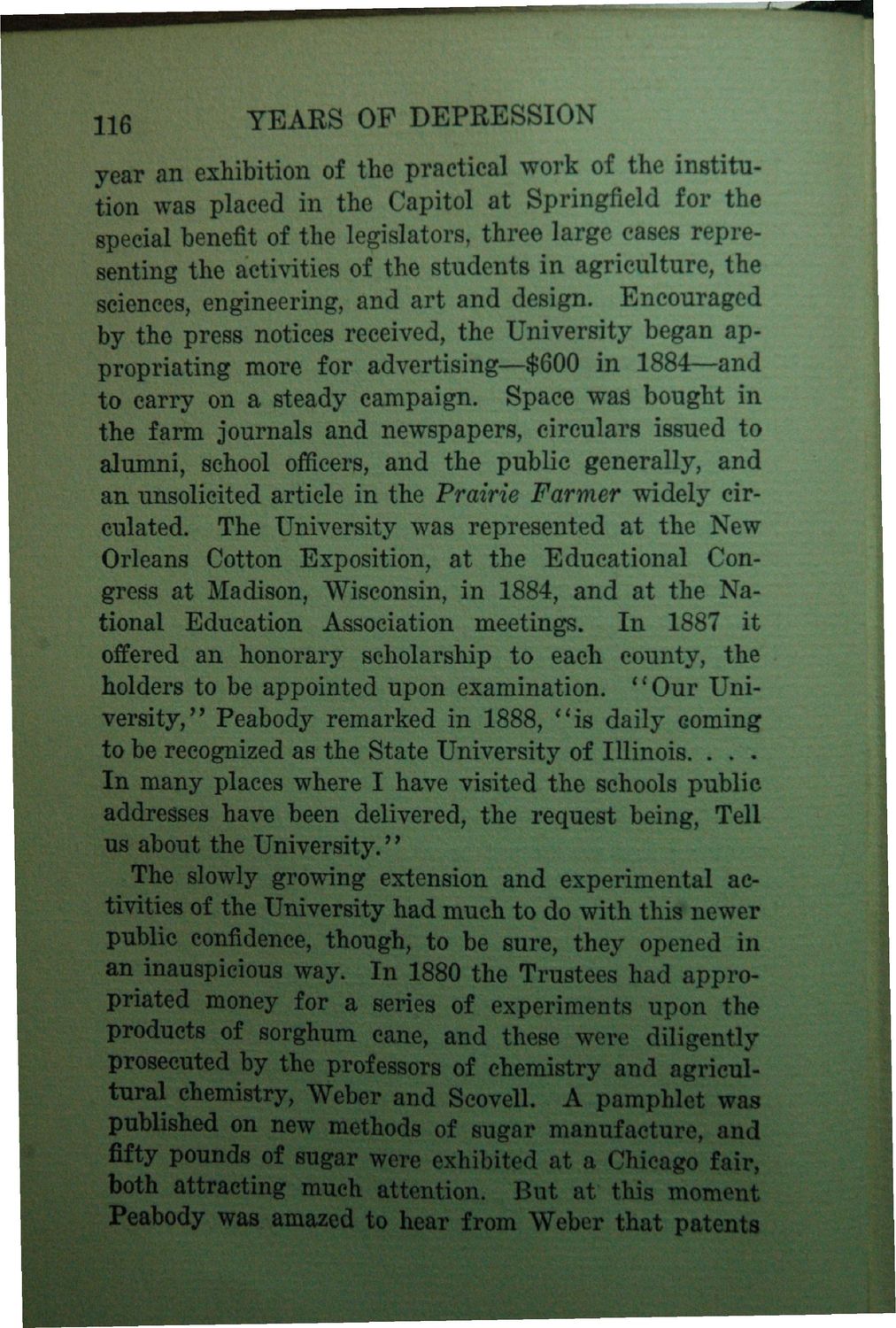| |
| |
Caption: Book - History of the University (Nevins)
This is a reduced-resolution page image for fast online browsing.

EXTRACTED TEXT FROM PAGE:
116 YEARS OF DEPRESSION year an exhibition of the practical work of the institution was placed in the Capitol at Springfield for the special benefit of the legislators, three large cases representing the activities of the students in agriculture, the sciences, engineering, and art and design. Encouraged by the press notices received, the University began appropriating more for advertising—$600 in 1884—and to carry on a steady campaign. Space was bought in the farm journals and newspapers, circulars issued to alumni, school officers, and the public generally, and an unsolicited article in the Prairie Farmer widely circulated. The University was represented at the New Orleans Cotton Exposition, at the Educational Congress at Madison, Wisconsin, in 1884, and at the National Education Association meetings. In 1887 it offered an honorary scholarship to each county, the holders to be appointed upon examinationJ|*'Our University,' I Peabody remarked in 1888, "is daily coming to be recognized as the State University of Illinois. . . . In many places where I have visited the schools public addresses have been delivered, the request being, Tell us about the University." The slowly growing extension and experimental activities of the University had much to do with this* newer public confidence, though, to be sure, they opened in an inauspicious way. In 1880 the Trustees had appropriated money for a series of experiments upon the products of sorghum cane, and these were diligently prosecuted by the professors of chemistry and agricultural chemistry, Weber and Scovell. H pamphlet was published on new methods of sugar manufacture, and fifty pounds of sugar were exhibited at a Chicago fair, both attracting much attention^ But at this moment Peabody was amazed to hear from Weber that patents
| |